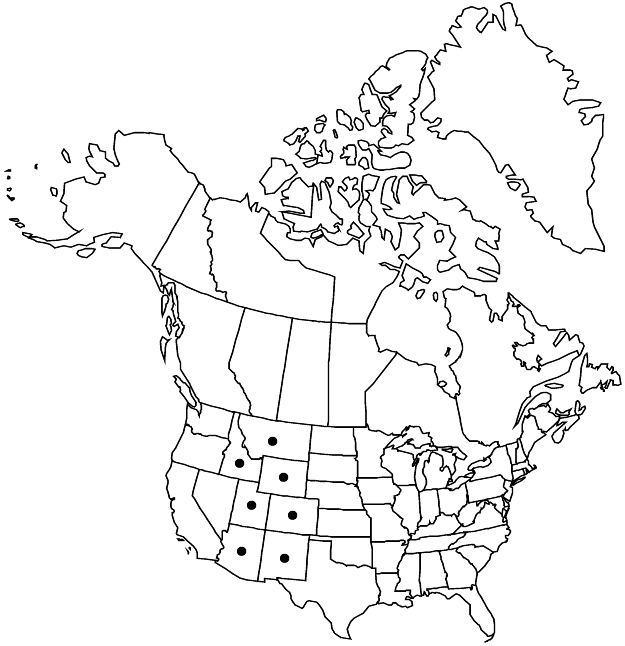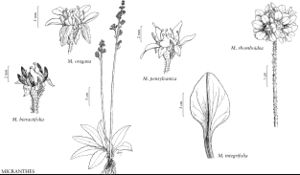Micranthes rhomboidea
in N. L. Britton et al., N. Amer. Fl. 22: 136. 1905 ,.
Plants solitary or tufted, with bulbils on caudices. Leaves basal; petiole flattened, 1–3 cm; blade broadly ovate to triangular, 1–3 cm, fleshy, base attenuate, margins coarsely serrate, ciliate, surfaces sparsely to moderately tangled, reddish brown-hairy abaxially, glabrous adaxially. Inflorescences (5–)10–40-flowered, congested, ± glomerate or capitate thyrses, 4–20 cm, usually densely yellow- to cream-tipped stipitate-glandular. Flowers: sepals ascending, ovate; petals white, not spotted, oblong to elliptic, clawed, 2–4 mm, 1.5+ times as long as sepals; filaments linear, flattened; pistils connate to 1/2 their lengths; ovary inferior, appearing more superior in fruit. Capsules purple, folliclelike. 2n = 20, 38, 40, 56.
Phenology: Flowering late spring–summer.
Habitat: Subalpine and alpine meadows
Elevation: 1500-4600 m
Distribution

Ariz., Colo., Idaho, Mont., N.Mex., Utah, Wyo.
Discussion
Micranthes rhomboidea is somewhat polymorphic; variants have been given taxonomic designations with little consistency. The chromosome number variation needs thorough study, as in other species of Micranthes, because no obvious correlations with morphology or geographic distribution are known (B. L. Bethers 1973). Reports from Canada (Alberta, Saskatchewan) were rejected as misidentifications of M. occidentalis.
Selected References
None.
